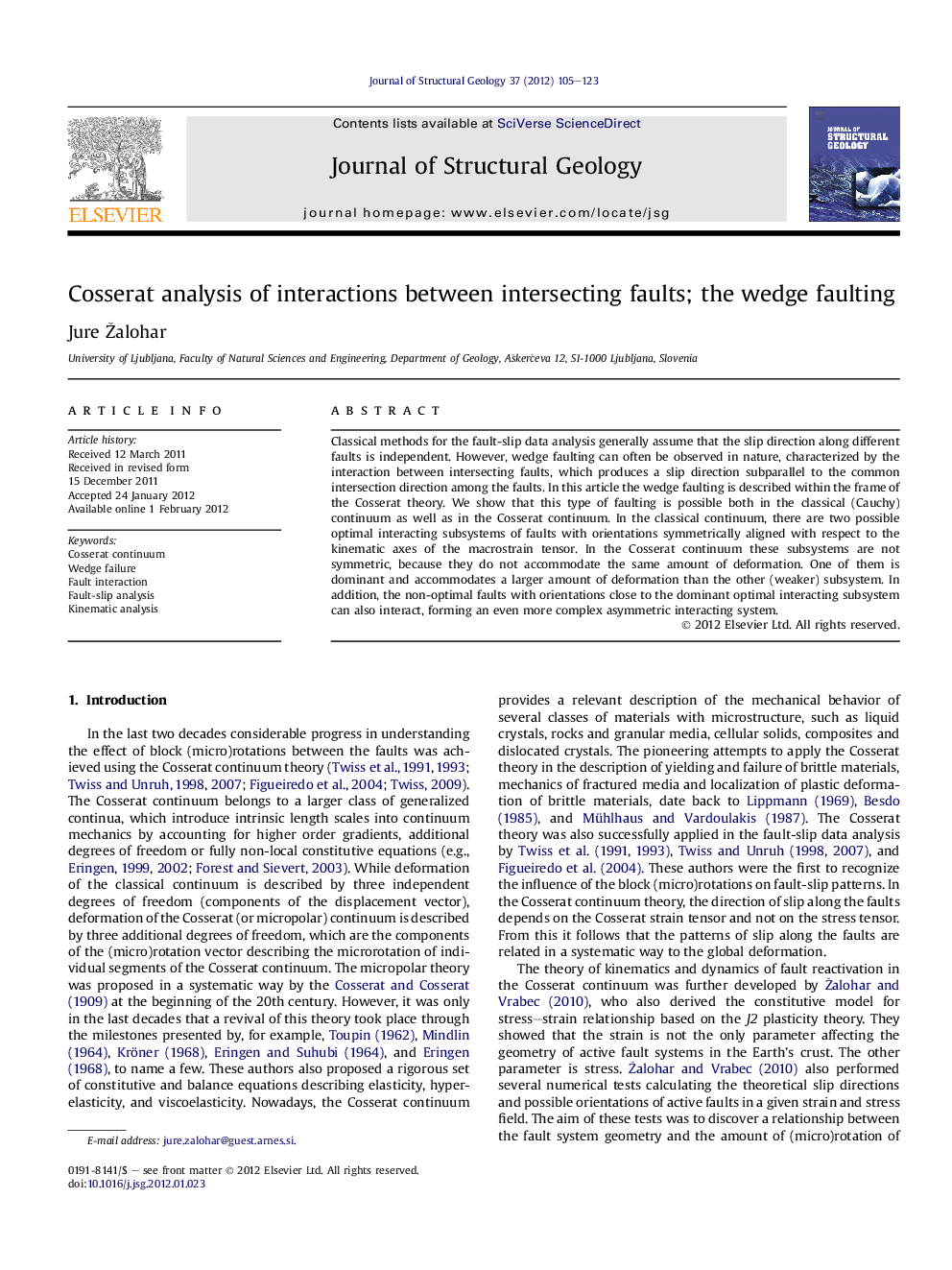| Article ID | Journal | Published Year | Pages | File Type |
|---|---|---|---|---|
| 4733293 | Journal of Structural Geology | 2012 | 19 Pages |
Classical methods for the fault-slip data analysis generally assume that the slip direction along different faults is independent. However, wedge faulting can often be observed in nature, characterized by the interaction between intersecting faults, which produces a slip direction subparallel to the common intersection direction among the faults. In this article the wedge faulting is described within the frame of the Cosserat theory. We show that this type of faulting is possible both in the classical (Cauchy) continuum as well as in the Cosserat continuum. In the classical continuum, there are two possible optimal interacting subsystems of faults with orientations symmetrically aligned with respect to the kinematic axes of the macrostrain tensor. In the Cosserat continuum these subsystems are not symmetric, because they do not accommodate the same amount of deformation. One of them is dominant and accommodates a larger amount of deformation than the other (weaker) subsystem. In addition, the non-optimal faults with orientations close to the dominant optimal interacting subsystem can also interact, forming an even more complex asymmetric interacting system.
► Slip along two intersecting faults is possible along the intersection line. ► Wedge faulting can occur in the classical as well as in the Cosserat continuum. ► In the Cosserat continuum, one of the optimal interacting subsystems is dominant. ► In the Cosserat continuum, the total interacting system of faults is asymmetric.
